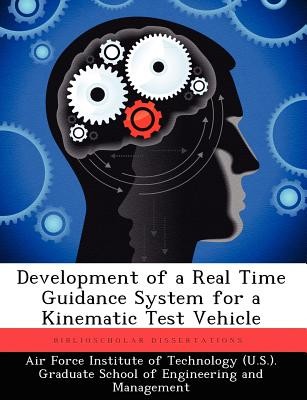
- We will send in 10–14 business days.
- Author: Orhan Cekic
- Publisher: BiblioScholar
- ISBN-10: 1249450551
- ISBN-13: 9781249450559
- Format: 18.9 x 24.6 x 0.5 cm, softcover
- Language: English
- SAVE -10% with code: EXTRA
Development of a Real Time Guidance System for a Kinematic Test Vehicle (e-book) (used book) | bookbook.eu
Reviews
Description
Differential carrier phase GPS measurements are capable of giving centimeter-level accuracies. These accuracies have many potential applications for safety and control of various types of vehicles. For this research, a real-time guidance system is developed. The real-time guidance system can be divided into two components: hardware and software. The hardware component consists of two GPS receivers (one base, one mobile), two wireless 115Kbaud transceivers, and two laptop computers. One computer is for the reference station and other is for the mobile receiver interface and graphical display. The guided vehicle is a golf car called the Remote Sensing Autonomous Vehicle for EN (RAVEN). The research concentrated on developing real-time data processing algorithms and using these algorithms to show guidance information to the user via a graphical interface. The developed software reads the real-time GPS data using an RS-232 interface and converts it to a usable form for the data processing algorithms. The data processing algorithm compares the real-time data with the desired track and outputs the guidance information to the guidance display. Based on the information from the guidance display, the user is able to drive on the desired track. Four tests were performed to evaluate the guidance system performance and human factors under different circumstances. These tests include update rate tests, a single instrument test, varying parameter tests, and an under hood test. Tests results and user feedback show that the system performs well under most conditions.
EXTRA 10 % discount with code: EXTRA
The promotion ends in 17d.17:15:53
The discount code is valid when purchasing from 10 €. Discounts do not stack.
- Author: Orhan Cekic
- Publisher: BiblioScholar
- ISBN-10: 1249450551
- ISBN-13: 9781249450559
- Format: 18.9 x 24.6 x 0.5 cm, softcover
- Language: English English
Differential carrier phase GPS measurements are capable of giving centimeter-level accuracies. These accuracies have many potential applications for safety and control of various types of vehicles. For this research, a real-time guidance system is developed. The real-time guidance system can be divided into two components: hardware and software. The hardware component consists of two GPS receivers (one base, one mobile), two wireless 115Kbaud transceivers, and two laptop computers. One computer is for the reference station and other is for the mobile receiver interface and graphical display. The guided vehicle is a golf car called the Remote Sensing Autonomous Vehicle for EN (RAVEN). The research concentrated on developing real-time data processing algorithms and using these algorithms to show guidance information to the user via a graphical interface. The developed software reads the real-time GPS data using an RS-232 interface and converts it to a usable form for the data processing algorithms. The data processing algorithm compares the real-time data with the desired track and outputs the guidance information to the guidance display. Based on the information from the guidance display, the user is able to drive on the desired track. Four tests were performed to evaluate the guidance system performance and human factors under different circumstances. These tests include update rate tests, a single instrument test, varying parameter tests, and an under hood test. Tests results and user feedback show that the system performs well under most conditions.


Reviews